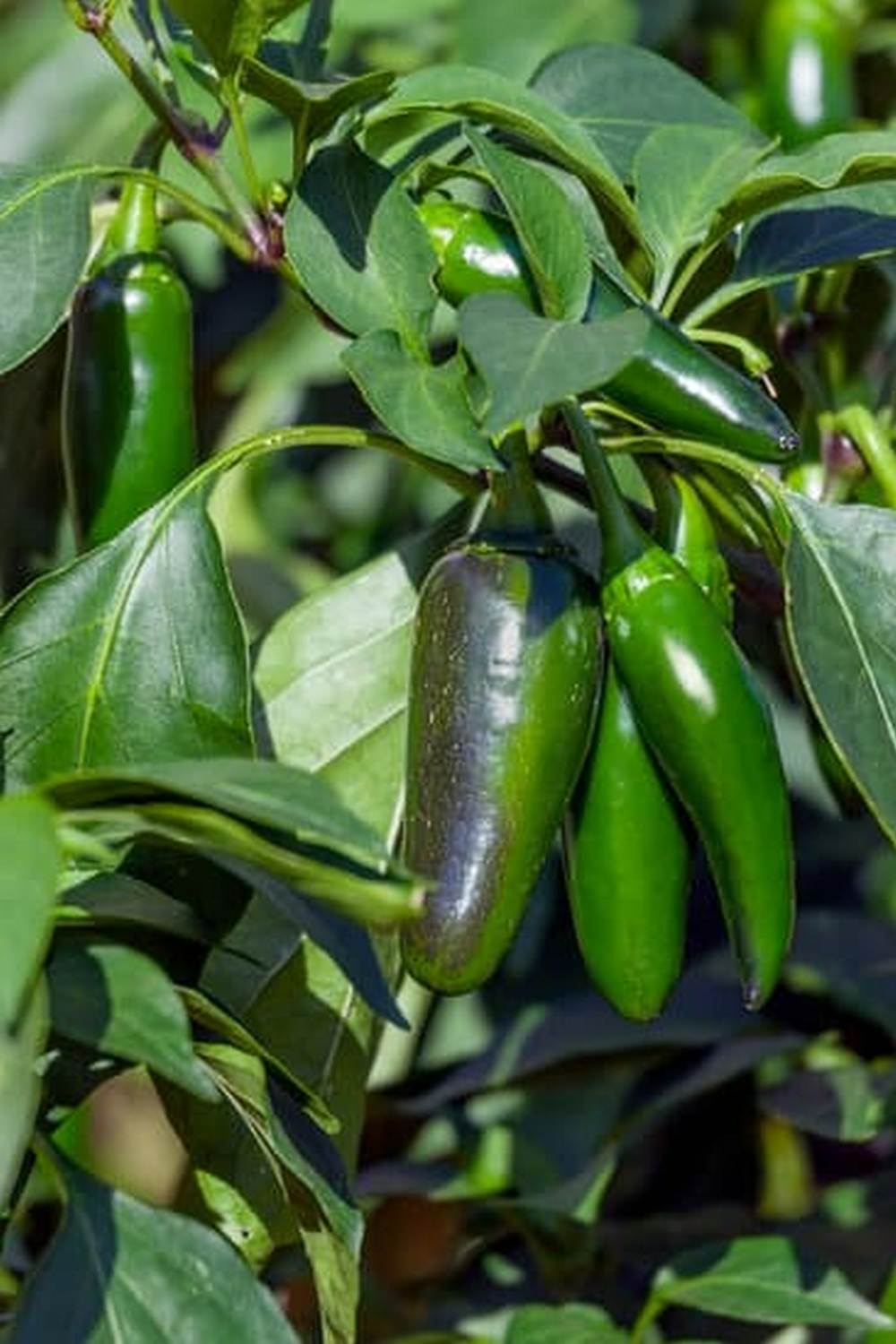Embarking on a journey into vegetable gardening can be an incredibly rewarding experience, especially for beginners in India. Whether you have a large backyard or just a small balcony, growing your own vegetables is not only satisfying but also ensures access to fresh and healthy produce.
In this article, we will explore valuable vegetable gardening tips for beginners in India, covering everything from understanding the climate to selecting the right vegetables, essential tools, soil preparation techniques, watering and fertilizing tips, pest control strategies, harvesting advice, and even organic gardening tips.
India’s diverse climate can present unique challenges and opportunities for vegetable gardening. Understanding the local weather patterns and how they impact plant growth is crucial for success. By selecting vegetables that are well-suited to the Indian climate and seasonality, beginners can increase their chances of a bountiful harvest. Additionally, being aware of regional variations in temperature and rainfall can help in planning and caring for your garden effectively.
When it comes to choosing the right vegetables for your garden in India, there are several factors to consider such as space availability, sunlight exposure, and personal preferences. Beginners should start with easy-to-grow vegetables like spinach, tomatoes, peppers, cucumbers, and beans which thrive in Indian conditions.
By investing in the essential tools and supplies needed for vegetable gardening, individuals can set themselves up for success from day one. Stay tuned as we delve deeper into each aspect of vegetable gardening tailored specifically for beginners in India.
Understanding the Indian Climate and Its Impact on Vegetable Gardening
India’s diverse climate plays a crucial role in the success of vegetable gardening for beginners. With varying weather conditions across different regions, it is essential to understand how the climate can impact your gardening efforts. In northern India, temperatures can get extreme, while southern regions experience more humidity. These factors need to be taken into account when selecting which vegetables to grow in your garden.
One important aspect of dealing with the Indian climate is choosing vegetables that are well-suited to the local conditions. For example, leafy greens like spinach and fenugreek thrive in cooler temperatures, making them ideal for northern states during winter.
On the other hand, heat-loving crops such as tomatoes, brinjal (eggplant), and okra do well in southern states where summers are hot and humid. By aligning your vegetable selection with the prevailing climate, you increase your chances of a successful harvest.
In addition to selecting the right vegetables, timing is also key when it comes to planting in accordance with the Indian climate. Understanding the growing seasons in your specific region can help beginners plan their planting schedule effectively.
For instance, sowing seeds too early or too late can result in poor germination or stunted growth due to unfavorable weather conditions. By following these vegetable gardening tips for beginners in India and working with the climate rather than against it, aspiring gardeners can set themselves up for a rewarding experience in growing their own fresh produce.
| Climate Factor | Vegetables Recommendations |
|---|---|
| Extreme Temperatures (North India) | Spinach, Fenugreek |
| Hot and Humid Conditions (South India) | Tomatoes, Brinjal (Eggplant), Okra |
Selecting the Right Vegetables for Your Garden in India
When starting a vegetable garden in India, selecting the right vegetables is crucial for a successful harvest. The diverse climate and soil conditions across different regions of India can greatly impact the growth of certain vegetables. It is important for beginners to choose vegetables that are well-suited to the local climate and soil, ensuring a higher chance of success.
Consider Local Varieties
One of the first things beginners should consider when selecting vegetables for their Indian garden is to opt for local varieties. These varieties are already adapted to the specific climate and soil conditions of the region, making them easier to grow for beginners. Additionally, local vegetables are more likely to thrive and produce a bountiful harvest compared to exotic or foreign varieties.
Seasonal Vegetables
Another important factor to consider when choosing vegetables for your Indian garden is their seasonal availability. Different vegetables have different growing seasons in India, so it is essential to select crops that are suitable for the current season. For example, during the hot summer months, heat-tolerant vegetables like tomatoes, okra, and eggplants are ideal choices. Understanding the seasonal variations will help beginners plan their garden accordingly and maximize their harvest.
Easy-to-Grow Vegetables
For beginners venturing into vegetable gardening in India, it is advisable to start with easy-to-grow vegetables that require minimal maintenance. Vegetables like spinach, radishes, green beans, and coriander are excellent choices for novice gardeners as they are relatively low-maintenance and can be grown successfully with basic care.
Starting with these beginner-friendly options allows newcomers to gain confidence and experience before moving on to more challenging crops. By selecting the right vegetables based on local conditions, seasonality, and ease of growth, beginners can set themselves up for a rewarding vegetable gardening experience in India.
Essential Tools and Supplies for Beginners in Vegetable Gardening
Starting your vegetable gardening journey in India requires the right tools and supplies to ensure successful growth and maintenance of your plants. Here are some essential items you will need to kick start your garden:
- Hand Trowel: A small hand tool that is perfect for digging small holes, transplanting seedlings, and removing weeds. It is a versatile tool that every beginner gardener should have.
- Garden Hoe: Ideal for breaking up soil, weeding, and cultivating the garden bed. It helps in aerating the soil and keeping it loose for better plant growth.
- Watering Can or Hose: Proper watering is crucial for the health of your vegetable plants. Investing in a good quality watering can or hose will make it easier to maintain consistent moisture levels.
In addition to tools, having the right supplies on hand is equally important for successful vegetable gardening. Here are some essential supplies that beginners in India should consider having:
- Seeds or Seedlings: Depending on the vegetables you want to grow, you will need either seeds or seedlings to start your garden. Make sure to choose varieties that are suitable for the Indian climate.
- Organic Fertilizer: To provide essential nutrients to your plants, investing in organic fertilizer is recommended. It will promote healthy growth and improve the overall quality of your homegrown vegetables.
- Potting Mix or Compost: Good quality potting mix or compost is essential for creating a nutrient-rich environment for your plants to thrive. It improves soil structure and boosts microbial activity in the soil.
By having the right tools and supplies at your disposal, you’ll be better equipped to tackle any challenges that come your way as you embark on your vegetable gardening journey in India. Remember, investing in quality tools and supplies will set you up for success in growing a bountiful harvest of fresh vegetables at home.
Soil Preparation and Planting Techniques for Successful Growth
Soil preparation is a crucial step in ensuring successful vegetable gardening in India. The soil quality directly impacts the growth and health of your plants. Begin by testing your soil to understand its composition and pH levels. Most vegetables thrive in well-draining, nutrient-rich soil with a slightly acidic pH level. If needed, amend your soil by adding organic matter such as compost, vermicompost, or well-rotted manure to improve its structure and fertility.
When it comes to planting techniques, consider the spacing requirements of each vegetable variety to prevent overcrowding and ensure optimal growth. Follow the instructions on seed packets or plant tags for guidance on planting depth and spacing between plants. Some vegetables may require specific planting methods, such as direct seeding or transplanting seedlings. Additionally, rotating your crops annually can help prevent diseases and maintain soil health by reducing nutrient depletion.
Furthermore, practicing companion planting can be beneficial for maximizing space utilization and naturally deterring pests. Certain plant combinations can complement each other’s growth requirements while repelling harmful insects or attracting beneficial ones.
For example, planting marigolds near tomatoes can help deter nematodes, while growing basil alongside peppers can enhance flavor and repel pests like aphids. By paying attention to soil preparation and implementing proper planting techniques, beginner vegetable gardeners in India can set a strong foundation for a thriving garden.
| Soil Preparation Tips | Planting Techniques |
|---|---|
| Test soil composition and pH levels | Follow spacing requirements for each vegetable |
| Amend soil with organic matter | Consider specific planting methods based on the type of vegetables |
| Practice crop rotation | Explore companion planting for mutual benefits |
Watering and Fertilizing Tips for Healthy Vegetable Plants
Watering and fertilizing are crucial components of a successful vegetable garden in India. Proper watering ensures that your plants receive the necessary hydration to thrive, while fertilizing provides essential nutrients for healthy growth. Here are some tips to help beginners achieve lush and vibrant vegetable plants:
- Watering Schedule: It is important to establish a consistent watering schedule for your vegetable garden. In India, where temperatures can soar during the summer months, it is advisable to water early in the morning or late in the evening to prevent evaporation. Avoid overhead watering to prevent fungal diseases and focus on delivering water directly to the roots.
- Choosing the Right Fertilizer: Selecting the right fertilizer is key to providing your vegetable plants with essential nutrients for optimal growth. In India, organic fertilizers such as compost, vermicompost, and neem cake are widely used for their effectiveness and sustainability. Avoid over-fertilizing as it can lead to nutrient imbalances and harm your plants.
- Feeding Frequency: While it’s important to provide your vegetable plants with nutrients, it’s equally crucial not to overfeed them. Follow the recommended dosage on the fertilizer package or consult with local gardening experts for guidance on feeding frequency. Overfeeding can result in burnt roots and stunted growth.
Proper watering and fertilizing practices are essential for maintaining healthy vegetable plants in an Indian garden. By following these tips and staying attentive to your plants’ needs, you can enjoy a bountiful harvest of homegrown vegetables that are nutritious and delicious. Stay committed to learning and adapting your watering and fertilizing routine based on seasonal changes and plant requirements for a thriving vegetable garden experience.
Pest Control and Disease Prevention Strategies for Indian Gardens
Identifying Common Pests and Diseases in Indian Vegetable Gardens
When starting your vegetable garden in India, it is crucial to be familiar with the common pests and diseases that can affect your plants. Some of the most common pests include aphids, caterpillars, and whiteflies, while diseases such as powdery mildew and blight can also pose a threat. By being able to identify these issues early on, you can take the necessary steps to prevent them from spreading and causing damage to your precious vegetables.
Natural Pest Control Methods for Indian Vegetable Gardens
One of the best ways to control pests in your vegetable garden is by using natural methods that are safe for both your plants and the environment. For instance, planting companion plants like marigolds can help repel harmful pests, while introducing beneficial insects such as ladybugs can combat aphid infestations. Additionally, practicing crop rotation and proper spacing between plants can help reduce the spread of diseases and keep pest populations at bay.
Preventive Measures for Disease Management in Indian Vegetable Gardens
In addition to controlling pests, it is essential to implement preventive measures to manage diseases in your vegetable garden. This includes ensuring proper air circulation by spacing out your plants adequately, avoiding overhead watering to prevent fungal growth, and regularly inspecting your plants for any signs of disease.
If you do notice any issues, it is important to act quickly by removing affected plant parts and applying organic fungicides or pesticides as needed. By being proactive in disease prevention, you can help ensure a healthy and thriving vegetable garden in India.
By following these pest control and disease prevention strategies tailored for Indian gardens, beginners can successfully navigate the challenges that may arise during their vegetable gardening journey. With patience, diligence, and a little bit of knowledge on how to tackle these common issues effectively, you can enjoy a bountiful harvest of homegrown vegetables in no time.
Harvesting and Storing Your Homegrown Vegetables in India
Harvesting your homegrown vegetables is one of the most satisfying aspects of vegetable gardening for beginners in India. It signifies the success of all your hard work and dedication to nurturing your plants.
To ensure that you harvest your vegetables at the right time, it is essential to familiarize yourself with the specific harvesting periods for each type of vegetable. For example, tomatoes are best harvested when they are firm and fully colored, while leafy greens should be picked when they reach a desirable size.
Proper storage of harvested vegetables is crucial to prolong their freshness and quality. In India, where temperatures can soar during certain seasons, it is important to store your vegetables in a cool and dry place to prevent them from spoiling quickly. Vegetables like potatoes and onions should be stored in a well-ventilated area away from sunlight, while leafy greens benefit from being stored in a refrigerator to retain their crispness.
Additionally, it is recommended to harvest vegetables early in the morning or late in the evening when temperatures are cooler. This not only helps preserve the freshness of the produce but also minimizes wilting and dehydration. By following these harvesting and storing practices, beginners can enjoy a bountiful supply of homegrown vegetables throughout the year, leading to a more sustainable and rewarding vegetable gardening experience in India.
Bonus Section
Organic vegetable gardening in India is becoming increasingly popular as more people are looking for healthier and sustainable ways to grow their own food. One of the key aspects of organic gardening is the use of natural methods and products to nurture plants and protect them from pests and diseases. By avoiding synthetic chemicals, organic gardeners can create a more environmentally friendly and nutritious result.
For beginners interested in starting an organic vegetable garden in India, it is important to focus on building healthy soil. Organic matter such as compost, manure, and mulch can improve soil structure, fertility, and water retention. This creates a strong foundation for your plants to thrive without the need for chemical fertilizers. Additionally, practicing crop rotation can help prevent nutrient depletion and reduce the risk of disease buildup in the soil.
In addition to soil health, organic vegetable gardening in India requires careful attention to pest management. Natural predators, physical barriers like netting or row covers, and companion planting techniques can all help keep pests at bay without resorting to harmful chemicals.
Regularly inspecting plants for signs of pests or diseases and taking prompt action can also prevent widespread damage to your crops. By following these tips for organic vegetable gardening in India, beginners can enjoy a bountiful harvest while supporting sustainable practices that benefit both their health and the environment.
Conclusion
In conclusion, embarking on a vegetable gardening journey in India can be a rewarding and fulfilling experience for beginners. By following the tips and guidelines provided in this article, individuals can create their own bountiful harvest of fresh, organic vegetables right in their backyard. Understanding the Indian climate, selecting the right vegetables, using essential tools, preparing the soil correctly, and implementing proper watering and fertilizing techniques are all crucial steps in ensuring a successful vegetable garden.
Furthermore, incorporating pest control and disease prevention strategies will help maintain healthy plants throughout the growing season. By being proactive in monitoring for any signs of pests or diseases, beginners can address issues quickly and effectively to protect their precious vegetable crops. Harvesting homegrown vegetables is a gratifying moment that showcases the hard work and dedication put into cultivating a thriving garden.
As beginners gain more experience and confidence in vegetable gardening, they may even consider transitioning towards organic practices. By utilizing natural methods for pest control, fertilization, and soil enrichment, individuals can not only produce healthier vegetables but also contribute positively to the environment. With dedication and perseverance, anyone can become a successful vegetable gardener in India. So roll up your sleeves, dig into the dirt, and enjoy the journey of growing your own nutritious produce at home. Happy gardening.
Frequently Asked Questions
What Should I Put in My Beginner Vegetable Garden?
For your beginner vegetable garden, it’s best to start with easy-to-grow and low-maintenance vegetables like tomatoes, peppers, lettuce, carrots, and zucchini. These crops are forgiving for beginners and can thrive in various growing conditions.
Which Vegetables Grow Fast at Home in India?
In India, vegetables that grow fast at home include okra (lady’s finger), spinach, radishes, green beans, and coriander. These vegetables are quick to mature and are well-suited for the Indian climate, making them ideal choices for home gardening.
What Vegetables Should I Grow as a Beginner?
As a beginner gardener, you should focus on growing vegetables that are relatively easy to cultivate and maintain. Some great options for beginners include tomatoes, cucumbers, leafy greens like spinach or lettuce, bell peppers, and green beans. These vegetables are generally resilient and yield satisfying results even for those new to gardening.

If you’re looking to get into vegetable gardening, or are just looking for some tips on how to make your current garden better, then you’ve come to the right place! My name is Ethel and I have been gardening for years. In this blog, I’m going to share with you some of my best tips on how to create a successful vegetable garden.





